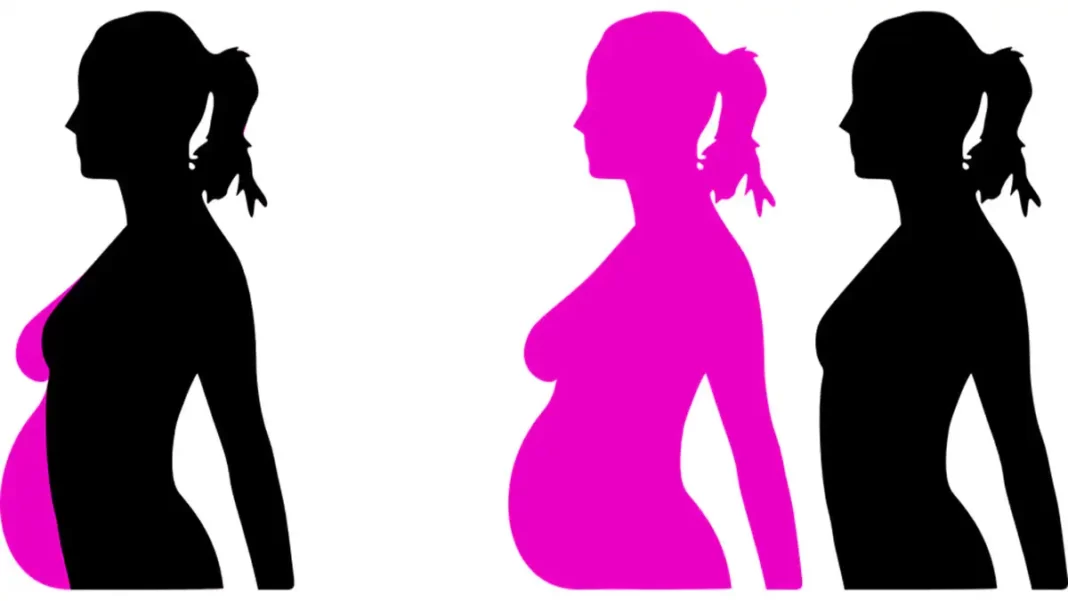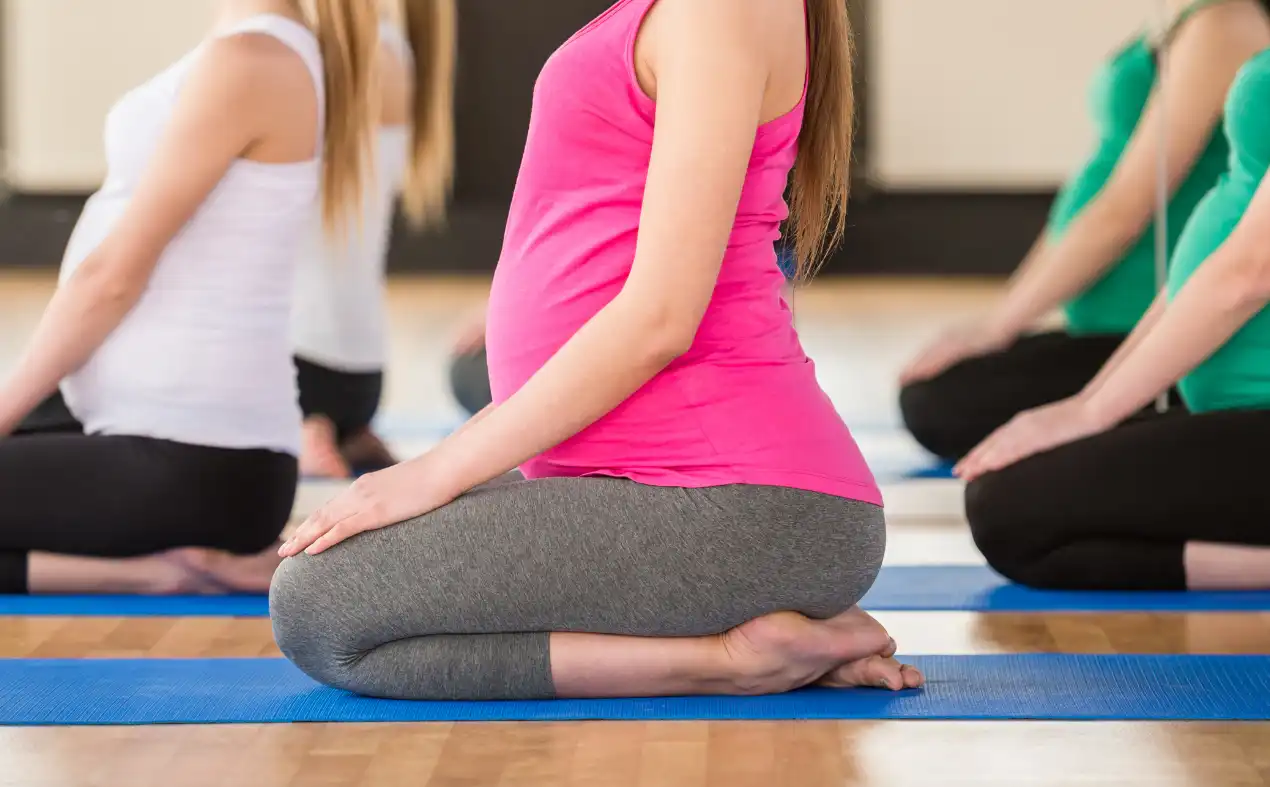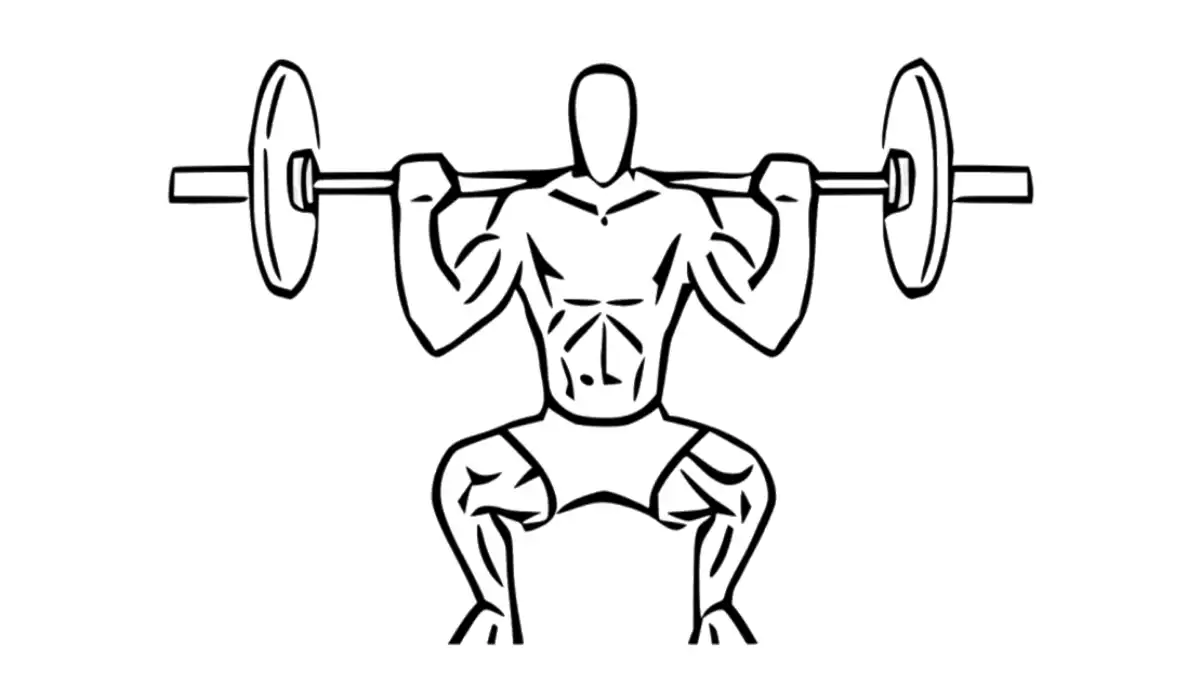Important Notice: Consult a Healthcare Professional
Before beginning any exercise regimen during pregnancy, it is crucial to consult a healthcare professional, such as an obstetrician, midwife, or osteopath, to ensure that your chosen activities are safe and suitable for your individual circumstances. Every pregnancy is unique, and what works for one person may not be appropriate for another. Your health and the health of your baby are the top priorities.
Introduction
Stretching during pregnancy offers a valuable avenue for the physical and emotional well-being of the mother-to-be. While every pregnancy is unique, incorporating a proper stretching routine can provide a range of benefits, from stress management to preparing the body for the birthing process.
Gentle stretching helps ease muscle tension often associated with pregnancy. By supporting flexibility, it helps relieve common back pain and prevent discomfort from the mother-to-be’s altered posture. Stretches that focus on sensitive areas, such as the lower back and hips, can promote optimal body alignment.
Emotionally, stretching can be a time of deep connection with the unborn baby. Conscious breathing during stretching creates harmony between body and mind, offering the mother-to-be a welcome break from the daily hustle and bustle.
It is crucial to note that pregnancy alters the body’s response to stretching due to hormonal changes and ligament relaxation. Therefore, movements should be deliberate, controlled and tailored to individual needs.
By incorporating stretching into a daily routine, moms-to-be can not only promote their physical health, but also cultivate a positive, centered mindset. It’s a practice that transcends physical movement to become a gentle, intentional celebration of the miracle of life in progress.
The Benefits of Stretching During Pregnancy
Stretching during pregnancy can provide various benefits for the physical and emotional well-being of pregnant women. However, it is essential to consult a healthcare professional before beginning any exercise program, including stretching, during pregnancy to ensure the safety of both mother and baby. Here are some beneficial factors related to stretching during pregnancy:
List of benefits:
- Muscle Tension Relief: During pregnancy, women may experience muscle tension, especially in the back, shoulders, and pelvis. Gentle stretching can help relieve this tension by promoting muscle relaxation and improving flexibility.
- Back Pain Prevention: Back pain is common during pregnancy due to the shift in your center of gravity and pressure on your spine. Stretches that target your back, hip, and leg muscles can help prevent and relieve back pain.
- Improved posture: Physiological changes during pregnancy can influence posture. Stretches that focus on strengthening the core and back muscles can help maintain better posture, which can reduce fatigue and discomfort.
- Increased Blood Circulation: Stretching stimulates blood circulation. Improved circulation can benefit overall health, helping to deliver oxygen and nutrients to the fetus as well as reducing swelling in the extremities.
- Stress Management: Pregnancy often brings with it a variety of physical and emotional stresses. Stretching, especially those that incorporate deep breathing techniques, can promote relaxation, reduce stress, and improve emotional well-being.
- Preparing for childbirth: Certain stretches can help strengthen the pelvic floor muscles, which can be beneficial in preparing for childbirth. Proper stretching exercises can help with the flexibility needed during labor and delivery.
- Maintaining flexibility: Pregnancy can cause some loss of muscle flexibility. Regular stretching helps maintain or improve flexibility, which can be beneficial for everyday movements and light physical activities.
- Alleviate Back Pain: Pregnancy often leads to increased pressure on the lower back due to the shift in your center of gravity. Stretching the back muscles can relieve tension and discomfort, helping you maintain a more comfortable posture throughout the day.
- Enhance Posture: As your center of gravity shifts, maintaining good posture becomes essential. Stretching helps strengthen the muscles that support your posture, reducing the likelihood of developing back pain or other musculoskeletal issues.
- Reduce Muscle Tension: Hormonal changes during pregnancy can lead to muscle tightness. Stretching can ease muscle tension and promote relaxation, making it easier to cope with physical and emotional stress.
- Improve Circulation: Regular stretching helps improve blood flow, which is beneficial for both you and your baby. Enhanced circulation ensures that essential nutrients and oxygen reach the placenta more efficiently, supporting your baby’s development.
- Prepare for Labor: Stretching can increase flexibility and endurance, aiding in labor and delivery. It can help your body become more adaptable to the demands of childbirth, potentially making the process smoother and less stressful.
- Boost Energy Levels: Gentle stretching can be invigorating and help combat pregnancy-related fatigue. It can provide a natural energy boost, enhancing your overall sense of well-being.
- Promote Better Sleep: Stretching can help relax your muscles and calm your mind, potentially improving sleep quality. This is particularly beneficial as sleep can become more challenging during pregnancy due to physical discomfort and hormonal changes.
- Reduce Swelling: Swelling in the legs and feet is common during pregnancy. Stretching can help reduce fluid retention and decrease swelling, providing relief from this common pregnancy symptom.
- Relieve Hip Pain: As your pregnancy progresses, your hips may experience increased pressure and discomfort. Stretching exercises targeting the hip area can help relieve pain and improve mobility.
- Enhance Emotional Well-Being: The act of stretching can be meditative and calming, reducing stress and anxiety levels. This mental health benefit is crucial during pregnancy, as managing stress can positively impact both you and your baby’s health.
- Support Pelvic Floor Health: Stretching can support the pelvic floor muscles, which are vital during pregnancy and childbirth. Strengthening and maintaining flexibility in these muscles can help with labor and postpartum recovery.
- Foster Mind-Body Connection: Pregnancy is a time of significant change, and stretching can help you stay connected with your body, fostering a sense of mindfulness and awareness that can enhance your pregnancy experience.
Safe Stretching Techniques
Here are some safe stretching techniques you can incorporate into your routine:
- Pelvic Tilts:
- How to do it: Stand with your back against a wall, feet hip-width apart. Gently tilt your pelvis backward, pressing your lower back into the wall. Hold for a few seconds, then release.
- Benefits: Strengthens the lower back and abdominal muscles, alleviating back pain.
- Cat-Cow Stretch:
- How to do it: Start on your hands and knees. Inhale as you arch your back (cow pose), then exhale as you round your spine (cat pose).
- Benefits: Enhances spinal flexibility and relieves tension in the back and neck.
- Seated Forward Bend:
- How to do it: Sit on the floor with your legs extended. Gently reach for your toes, keeping your back straight. Hold the stretch for 10-15 seconds.
- Benefits: Stretches the hamstrings and lower back.
- Butterfly Stretch:
- How to do it: Sit with your feet together and knees bent out to the sides. Gently press your knees toward the floor.
- Benefits: Opens the hips and stretches the inner thighs.
- Neck and Shoulder Stretch:
- How to do it: Sit or stand with your back straight. Gently tilt your head to one side, holding for a few seconds, then switch sides.
- Benefits: Relieves tension in the neck and shoulders.
- Side Stretch
- How to do it:
- Benefits:
- Stretches the oblique muscles and increases flexibility in the torso.
- Relieves tension in the sides and lower back, promoting better posture.
- Hip Flexor Stretch
- How to do it:
- Start in a lunge position with your right foot forward and your left knee on the ground.
- Keep your upper body straight and gently push your hips forward.
- Hold the stretch for 15-20 seconds, then switch legs.
- Benefits:
- Opens up the hip flexors, which can become tight during pregnancy.
- Helps improve mobility and relieve lower back discomfort.
- How to do it:
- Calf Stretch
- How to do it:
- Stand facing a wall with your hands at shoulder height on the wall.
- Step one foot back, keeping it straight, and bend your front knee.
- Press the back heel into the ground and hold for 15-20 seconds, then switch legs.
- Benefits:
- Stretches the calf muscles, reducing tension and potential cramping.
- Improves circulation in the legs, helping to alleviate swelling.
- How to do it:
- Child’s Pose
- How to do it:
- Kneel on the floor with your big toes touching and knees spread apart.
- Sit back on your heels and stretch your arms forward, lowering your chest toward the ground.
- Rest in this position for 20-30 seconds.
- How to do it:
- Benefits:
- Provides a gentle stretch for the lower back and hips.
- Promotes relaxation and stress relief, aiding in mental well-being.
- Chest Opener Stretch
- How to do it:
- Stand with your feet shoulder-width apart.
- Clasp your hands behind your back and gently lift your arms, opening up your chest.
- Hold for 10-15 seconds.
- Benefits:
- Stretches the chest and shoulder muscles, which can help counteract poor posture.
- Improves breathing capacity by opening the chest area.
- How to do it:
- Quad Stretch
- How to do it:
- Stand with your feet hip-width apart, holding onto a chair or wall for balance.
- Bend one knee and bring your heel toward your buttocks, holding your ankle with your hand.
- Keep your knees together and hold for 15-20 seconds, then switch legs.
- Benefits:
- Stretches the quadriceps, reducing tension and improving flexibility.
- Supports balanced muscle development and posture.
- How to do it:
- Piriformis Stretch
- How to do it:
- Sit on the floor with your legs extended.
- Cross one leg over the other, placing your foot flat on the ground.
- Gently twist your torso toward the bent knee, using your opposite arm to support the stretch.
- Hold for 15-20 seconds, then switch sides.
- Benefits:
- Stretches the piriformis muscle, which can help alleviate sciatic pain.
- Enhances hip mobility and reduces lower back discomfort.
- How to do it:
- Neck Circles
- How to do it:
- Sit or stand comfortably with your back straight.
- Gently drop your chin toward your chest and rotate your head in a slow circle.
- Perform 5-6 circles in each direction.
- Benefits:
- Relieves tension in the neck and shoulders, which can be common during pregnancy.
- Promotes relaxation and reduces stress.
- How to do it:
- Standing Hamstring Stretch
- How to do it:
- Stand with one foot slightly in front of the other.
- Hinge at your hips and lower your torso toward the front leg, keeping your back straight.
- Hold the stretch for 15-20 seconds, then switch legs.
- Benefits:
- Stretches the hamstrings and lower back, improving flexibility.
- Helps relieve tension in the legs and back, especially helpful as your pregnancy progresses.
- How to do it:
- Wall Sit Stretch
- How to do it:
- Stand with your back against a wall and feet shoulder-width apart.
- Slowly slide down into a seated position, holding for 15-20 seconds.
- Benefits:
- Strengthens and stretches the quadriceps, hamstrings, and calves.
- Helps build endurance and relieve lower back pain.
- How to do it:
Tips for Safe Stretching During Pregnancy
- Warm-Up: Start with a gentle warm-up to increase blood flow and prepare your muscles for stretching.
- Listen to Your Body: Avoid overstretching or pushing yourself too hard. Stretching should be comfortable and pain-free.
- Focus on Breathing: Breathe deeply and steadily to enhance relaxation and effectiveness.
- Modify as Needed: Adapt stretches to accommodate your growing belly and any discomfort you may experience.
- Stay Hydrated: Drink plenty of water to stay hydrated, especially if you are stretching as part of a more extensive exercise routine.
When to Avoid Stretching
While stretching is generally safe during pregnancy, certain conditions may require caution or avoidance. Consult your healthcare professional if you experience:
- Severe Pain: Any sharp or intense pain should be addressed immediately.
- Dizziness or Lightheadedness: Stop stretching if you feel dizzy or faint.
- Preterm Labor Symptoms: If you experience contractions, bleeding, or unusual discharge, seek medical advice promptly.
Recommendation
Specific recommendations for stretching during pregnancy may vary based on individual fitness levels and medical history. However, here are some general recommendations for pregnant women who want to include stretching in their routine:
- Consult your healthcare professional: Before beginning any stretching or exercise program during pregnancy, consult your healthcare professional, whether it is your obstetrician, midwife or doctor. They will be able to give you personalized advice based on your situation.
- Avoid lying on your back after the first trimester: Due to the pressure on the vena cava, it is recommended to avoid lying on your back after the first trimester of pregnancy. Instead, opt for stretches in a sitting, standing, or side position.
- Focus on gentle, progressive stretches: Opt for gentle, progressive stretches that work the major muscle groups. Avoid sudden or excessive movements that could cause overexertion.
- Maintain regular breathing: While stretching, make sure to maintain regular breathing. Deep breathing techniques can promote relaxation and help manage stress.
- Avoid positions that may compress the abdomen: Avoid positions that could put pressure on the abdomen, especially during the later trimesters of pregnancy. Also avoid movements that could cause imbalances.
- Incorporate back, hip, and leg stretches: Focus on stretches that target the muscles in your back, hips, and legs. These areas often experience increased tension during pregnancy.
- Stop if discomfort or pain occurs: If you feel discomfort, pain, or dizziness during a stretch, stop immediately. Consult your healthcare professional if you have any concerns.
- Vary the types of stretches: Incorporate a variety of stretches into your routine to ensure overall flexibility. This can include static stretches, adapted yoga stretches, and mobility exercises.
- Stay hydrated: Make sure you stay well hydrated, especially during exercise. Dehydration can make muscle stiffness worse.
Rules for the second and third trimester
During the second and third trimesters of pregnancy, it is important to adjust stretching practices to meet the specific needs of the pregnant woman’s ever-changing body. Here are some rules and recommendations for stretching during these trimesters:
- Ongoing medical consultation: Continue to see your healthcare professional regularly throughout your pregnancy. Let them know about any stretching activities you plan to incorporate into your routine to ensure they are safe for you and your baby.
- Avoid supine positions after the first trimester: After the first trimester, avoid lying on your back while stretching, as this can compress the vena cava and reduce blood flow to the heart. Instead, opt for sitting, standing, or sideways positions.
- Focus on seated or standing stretches: Choose stretches that can be done while sitting or standing to minimize pressure on the abdomen. Stretches such as forward bends, spinal rotations, and hip stretches can be beneficial.
- Use supports for stability: To maintain balance and stability while stretching, use supports such as a chair, wall, or yoga blocks. This reduces the risk of falls or imbalances, which can be more common during pregnancy.
- Prefer gentle, static stretches: Opt for gentle, static stretches rather than dynamic stretches. Avoid sudden movements that could cause over-tension of the muscles.
- Be aware of loose ligaments: During pregnancy, hormones can loosen ligaments to prepare the body for childbirth. Be aware of this ligament laxity and avoid excessive stretching that could jeopardize joint stability.
- Maintain steady breathing: Steady breathing is essential while stretching. Deep breathing can promote relaxation and help manage stress.
- Avoid uncomfortable positions: Avoid uncomfortable positions that may put excessive pressure on certain parts of the body. If a position causes discomfort, adapt it or choose an alternative stretch.
- Watch for signs of overheating: Avoid overheating while stretching. Make sure to stay hydrated and choose a cool environment to practice your stretches.
- Stop if pain or discomfort occurs: If you feel pain, discomfort, or dizziness during a stretch, stop immediately. Consult your healthcare professional if you have any concerns.
Relaxin and stretching
Relaxin is a hormone produced by the body, particularly by the corpus luteum of the ovaries and by the placenta during pregnancy. It plays a crucial role in the relaxation of connective tissues, particularly ligaments and joints. During pregnancy, relaxin helps to relax these structures to allow the pelvis to widen in preparation for childbirth.
In relation to stretching during pregnancy, the increased presence of relaxin may have important implications. Here’s how relaxin and stretching may be related:
- Ligament Relaxation: Relaxin helps to relax ligaments by loosening collagen fibers. This can increase joint flexibility and ease movement, but it can also make joints more vulnerable to injury if they are overused.
- Increased flexibility: The presence of relaxin during pregnancy can lead to increased flexibility in certain joints. This can be beneficial for stretching, as muscles and joints may respond more favorably to these movements.
- Need for caution: Although relaxin facilitates tissue relaxation, it is crucial to exercise extra caution during stretching. Pregnant women should avoid excessive movements that could jeopardize joint stability, especially in the lower back, hips, and pelvis.
- Reduced risk of injury: Gentle, appropriate stretching can help take advantage of the relaxin-induced ligament relaxation, reducing the risk of muscle strain and injury. Targeted stretching can also help relieve discomfort associated with muscle tension during pregnancy.
- Ligament laxity awareness: Pregnant women should be aware of relaxin-induced ligament laxity, especially when engaging in physical activities and stretching. Overstretching can lead to imbalances and increase the risk of injury.
Exercise and stretching to do during pregnancy
Cardiovascular Exercises:
- Walk :
- A low-impact activity that promotes blood circulation.
- Swimming :
- Excellent for strengthening muscles while relieving pressure on joints.
- Stationary Cycling:
- Low impact, it strengthens the legs and core.
Muscle strengthening:
- Modified Squats:
- Place your feet shoulder-width apart and bend your knees, keeping your back straight.
- Leg Extensions:
- On all fours, raise one leg straight back, keeping your back flat.
- Lateral Flexions:
- Standing with your feet apart, gently lean to one side, then the other.
Stretching:
- Quadriceps Stretch:
- Stand up, bend one leg and gently grab the ankle behind you.
- Upper Back Stretch:
- Sit cross-legged, clasp your hands behind your back and stretch your arms.
- Calf Stretch:
- Stand facing a wall, stretch one leg behind you with the foot flat.
Pelvic Floor Strengthening Exercises:
- Kegels:
- Contract your pelvic floor muscles as if you were trying to stop the flow of urine.
- Pelvic Bridge:
- Lie on your back, bend your knees and raise your pelvis towards the ceiling.
Breathing Exercises:
- Deep breathing :
- Sit comfortably and inhale deeply through your nose, then exhale slowly through your mouth.
- Quadratic Breathing:
- Inhale for four counts, hold for four counts, exhale for four counts, hold for four counts.
Remember to stay hydrated, wear comfortable clothing, and listen to your body. If you experience any unusual pain, stop exercising and consult your healthcare professional.


























